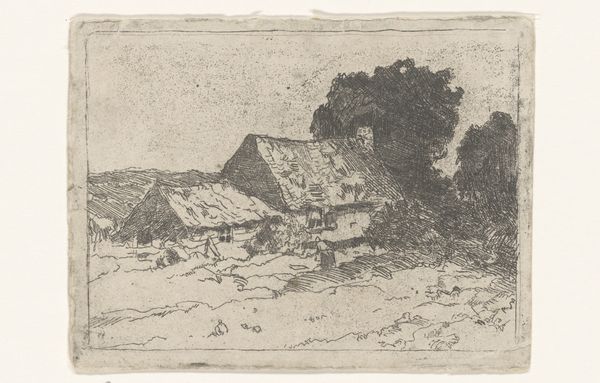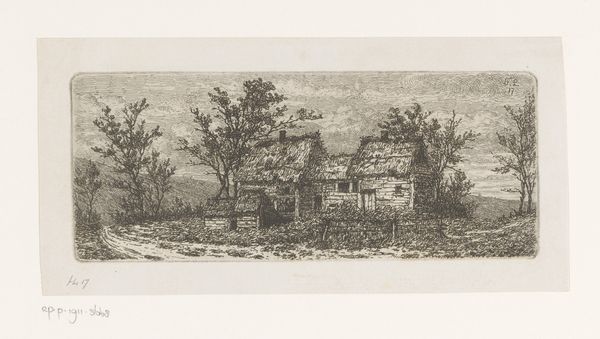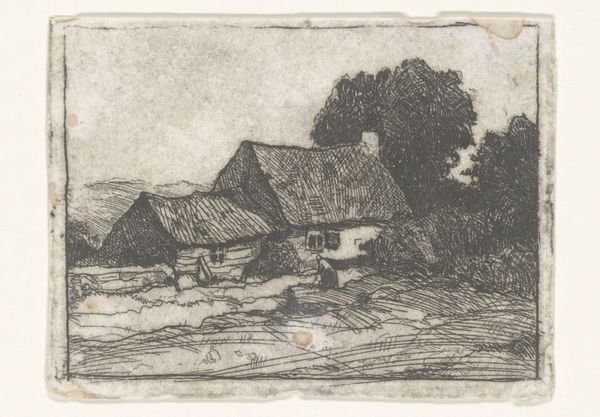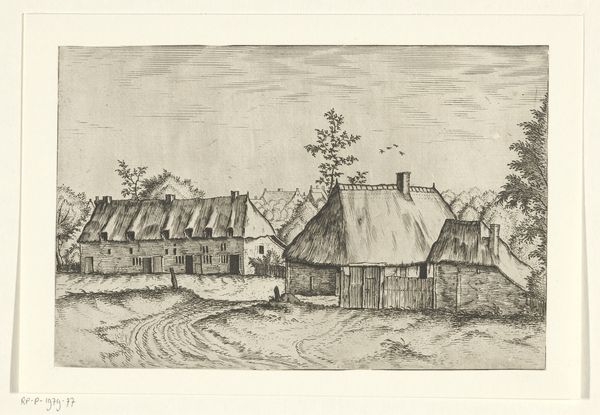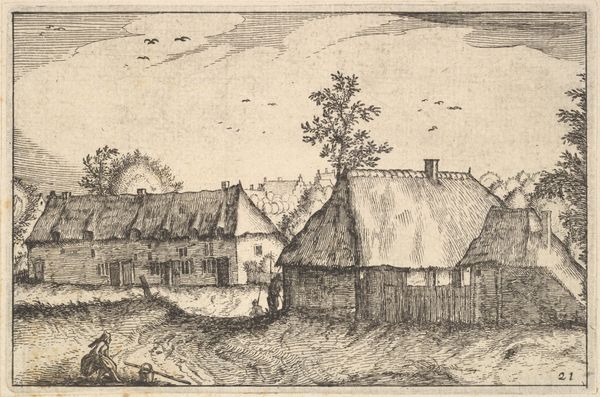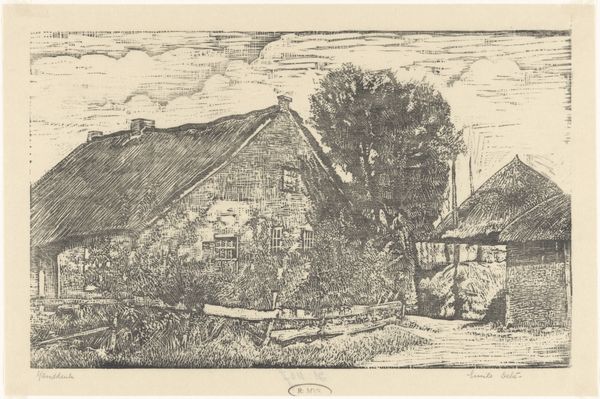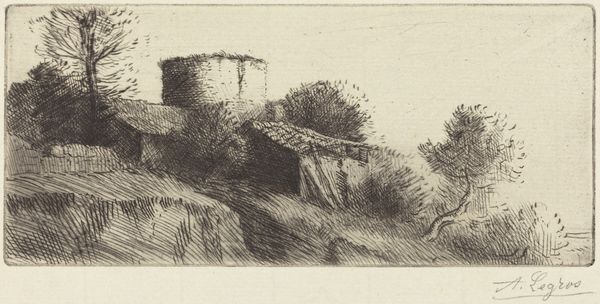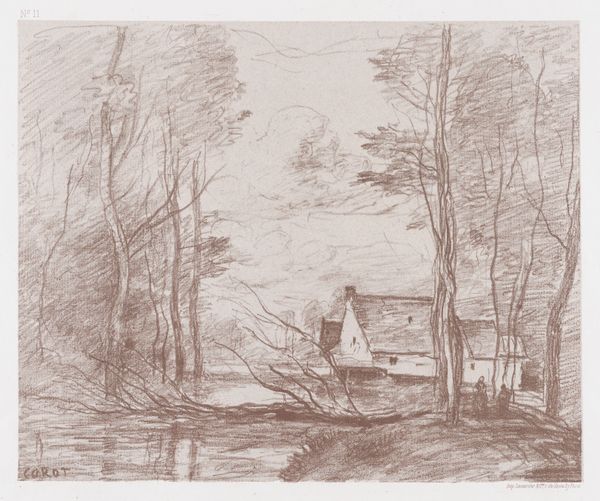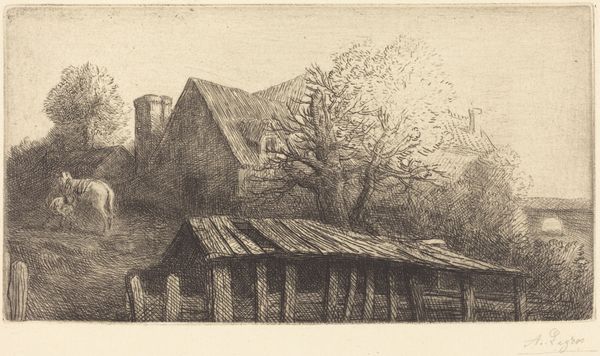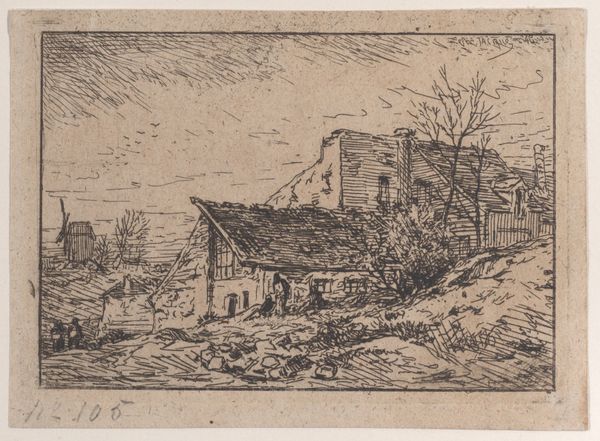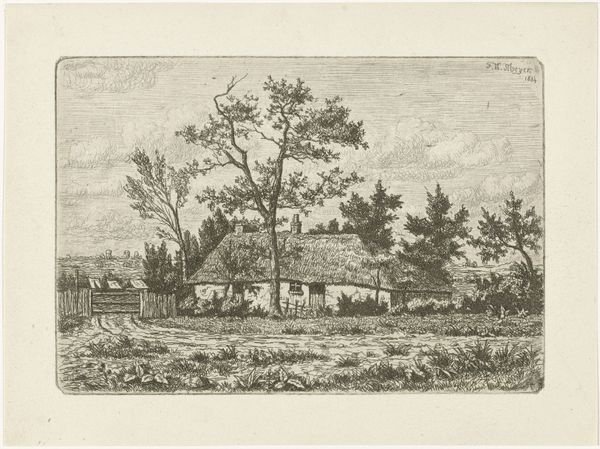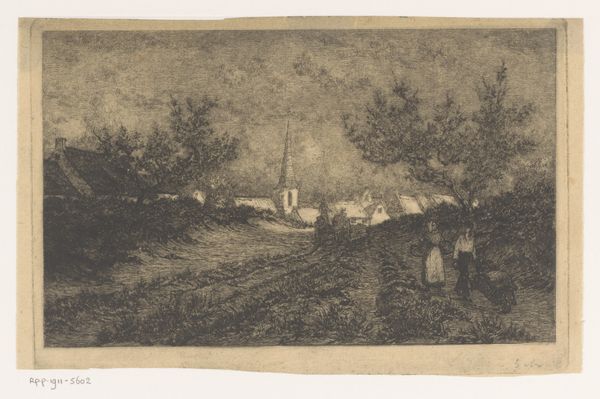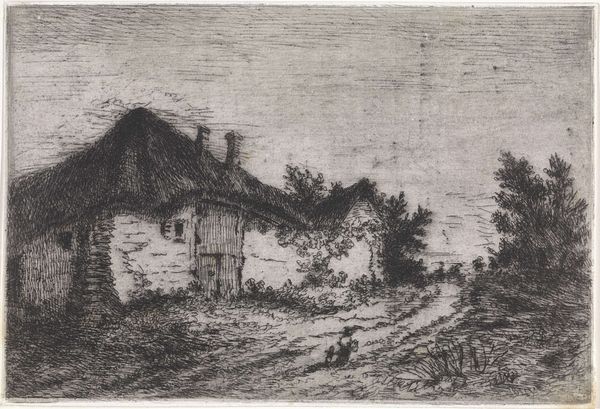
drawing, print, etching
#
drawing
# print
#
etching
#
landscape
#
natural texture
#
monochrome
Dimensions: height 51 mm, width 85 mm
Copyright: Rijks Museum: Open Domain
Curator: Up next we have a landscape by Arnoud Schaepkens, "Rietgedekt huis in een landschap," which translates to Thatched House in a Landscape. We believe it was created sometime between 1855 and 1904 and consists of both etching and drawing techniques rendered as a print. Editor: The print has a stillness, almost a whispered silence. It feels both delicate and enduring, like a half-remembered dream of rural life. It makes me think of windy days and a cozy refuge from it all. Curator: Yes, the texture is remarkable. You can almost feel the thatch of the roof. The use of etching lines gives incredible dimensionality. Consider how the physical act of creating these etched lines into the plate translates to the feeling you describe, an engagement with rural subject matter beyond just simple depiction. Editor: Absolutely. It goes beyond simple realism, which isn’t really there anyway with all that rough texture. It’s a softened reality, with a heavy emphasis on shelter, warmth and simple comforts. Makes you wonder about the state of life during that period for Schaepkens. Was this print a reflection on personal comfort or perhaps more social and political? Curator: Prints at this time served a dual role of aesthetic value and were instruments of widespread information and even propaganda. Etchings democratized art viewing—making landscapes accessible and affordable. The distribution mechanism allowed these images to enter a different sphere of consumption than unique paintings, with an affordable landscape potentially available to tradesmen and other classes of skilled laborers. Editor: Interesting! So maybe, Schaepkens sought to capture a comforting and familiar ideal, packaging it for mass appreciation. The idea that these thatched houses, representing that domesticity and simple life, became objects of longing in industrialized society? That really puts a new light on that “stillness” I mentioned earlier; it is both present and a sort of relic from a forgotten, simpler time. Curator: It prompts reflection on accessibility to different ways of living during the era as well as artistic production and labor involved in art. A fascinating microcosm in monochrome. Editor: Absolutely. I’m finding it quite poignant actually. Now, if only walls could talk... or etchings for that matter!
Comments
No comments
Be the first to comment and join the conversation on the ultimate creative platform.
